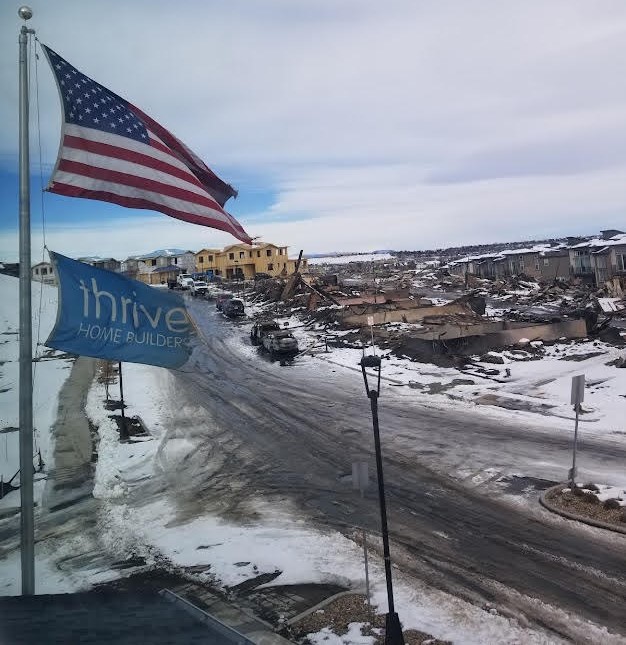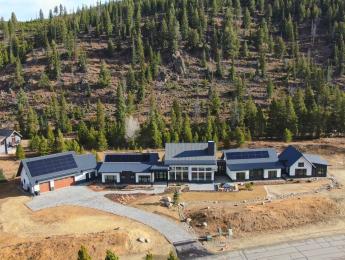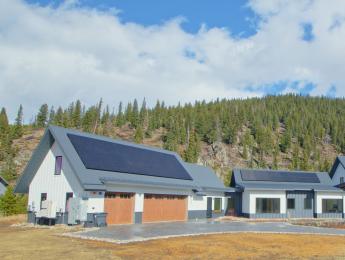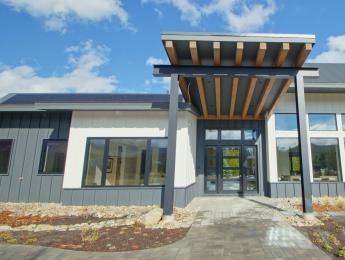A House for a Changing Climate
Thrive Home Builders takes several steps (and key specs) to boost the resiliency and durability of the Pro Builder Panorama Idea Home against wildfire and drought.
Nestled deep in the wildland-urban interface of Breckenridge, Colo., the Panorama Idea Home showcases a form and function that improves its resilience and durability against today’s unpredictable climate conditions and events. And in this mountain setting, that means drought and a higher chance of wildfires.
Built by Thrive Home Builders, the 6,600-square-foot custom home incorporates a wide range of materials and technologies that demonstrate the success of this net-zero energy, carbon neutral, all-electric sustainable dwelling with a structure and systems that offer superior protection against the elements and respect the importance of keeping homebuyers as safe as possible from climate-driven events.
Wildfire Threats
Building a fire-resilient home in a dense forest is a common challenge for Gene Myers, founder and Chief Sustainability Officer at Thrive. As a long-time resident of Colorado, Myers understands the “perfect storm” of the beetle kill epidemic, drought, and climate change that have recently conspired to increase the intensity and frequency of wildfires in the areas in which Thrive builds.
One example is the 2021 Marshall Fire in Boulder County, Colo., which destroyed 1,084 residential structures and caused over $500 million in damage. Thrive had 30 homes in the fire’s path that all withstood the disaster.
“The heat was so bad that all the flagpoles in front of the model home bent and melted, but our homes survived,” Myers says.

Lessons Learned and Steps Taken
Lessons learned from the Marshall Fire helped inform the design and materials used for Panorama. For instance, Thrive specified fiber-cement exterior siding and soffit materials from James Hardie that comply with ASTM E136 standards for noncombustible cladding. (In addition, the siding is also specifically engineered with the regional climate in mind for optimal performance.) Thrive also specified corrugated metal roofing to encompass the home’s shell with fire-resistant materials, a detail that also delivered a more rustic look appropriate to its high-country setting.
To further protect the home from flying embers, by far the biggest cause of homes destroyed by wildfire by entering attic vents and burning homes from the inside, the builder installed a new technology with a two-part fire protection system: a mesh grill over attic vents stops larger embers from entering, while an aluminum core with an intumescent coating expands and seals the vent when exposed to extreme heat or fire.
Indoor air quality during wildfire events also plays a role in a home’s resilience and care for its occupants. During extreme smoke events related to nearby wildfires, local officials may advise people to stay indoors, which can be problematic for homes with poor indoor air quality systems.
To address that issue, Panorama is certified by the EPA’s Indoor airPLUS program; within a checklist of performance standards required for certification, the home features a Whole House IAQ Management System from Greenheck that includes indoor air quality monitoring, energy recovery, and sensor-based demand-controlled ventilation..
When Water is Scarce
Drought compounds the risk of wildfire in Colorado. Even with considerable annual average snowfall in Breckenridge, climate change impacts include shorter winters, faster snow melts, and longer summers that not only result in creating drier conditions and more wildfire tinder, but also tax water resources for the built environment.
To combat that challenge, Panorama features drought-tolerant landscaping and a water-efficient drip-irrigation system, while plumbing fixtures and fittings, from faucets and toilets to major appliances, are rated for low water use without sacrificing the homeowner’s experience.
“We’re really just doing our part to make sure that everything we do is about the health of our customers and the health of our planet,” Myers says.
Resources and links:
For more information on Hardie siding products visit www.jameshardie.com. And to learn more about the resiliency of Hardie siding, visit: Siding Performance & Durability.
To learn more about Greenheck’s residential ventilation systems visit www.greenheck.com/residential-ventilation-solutions.


